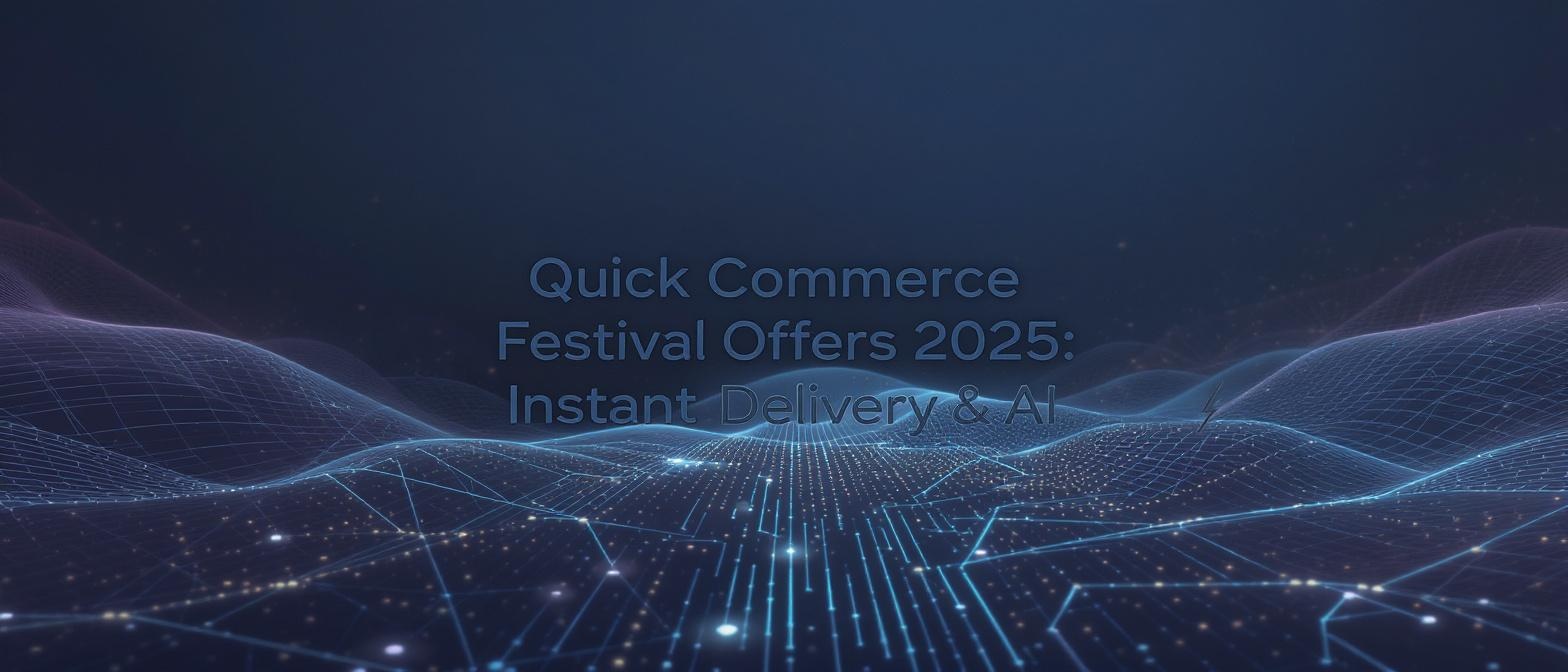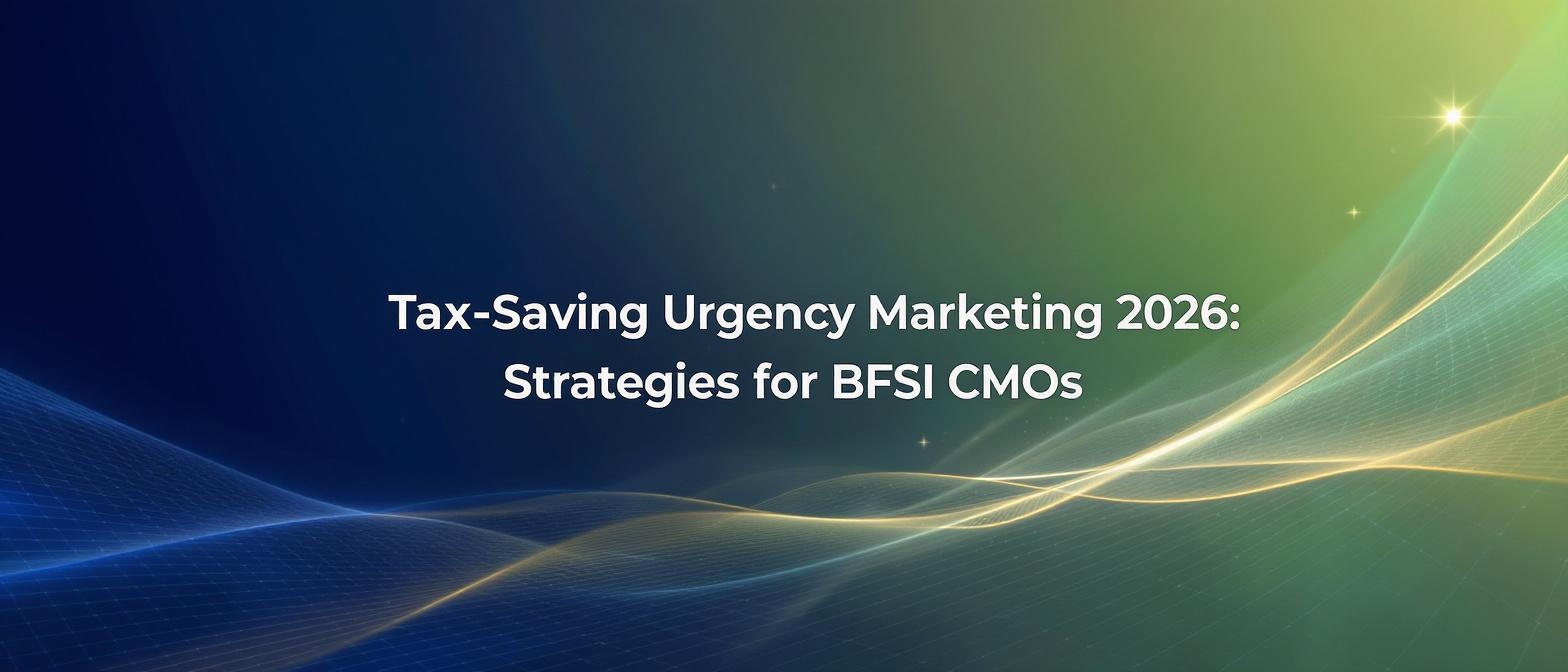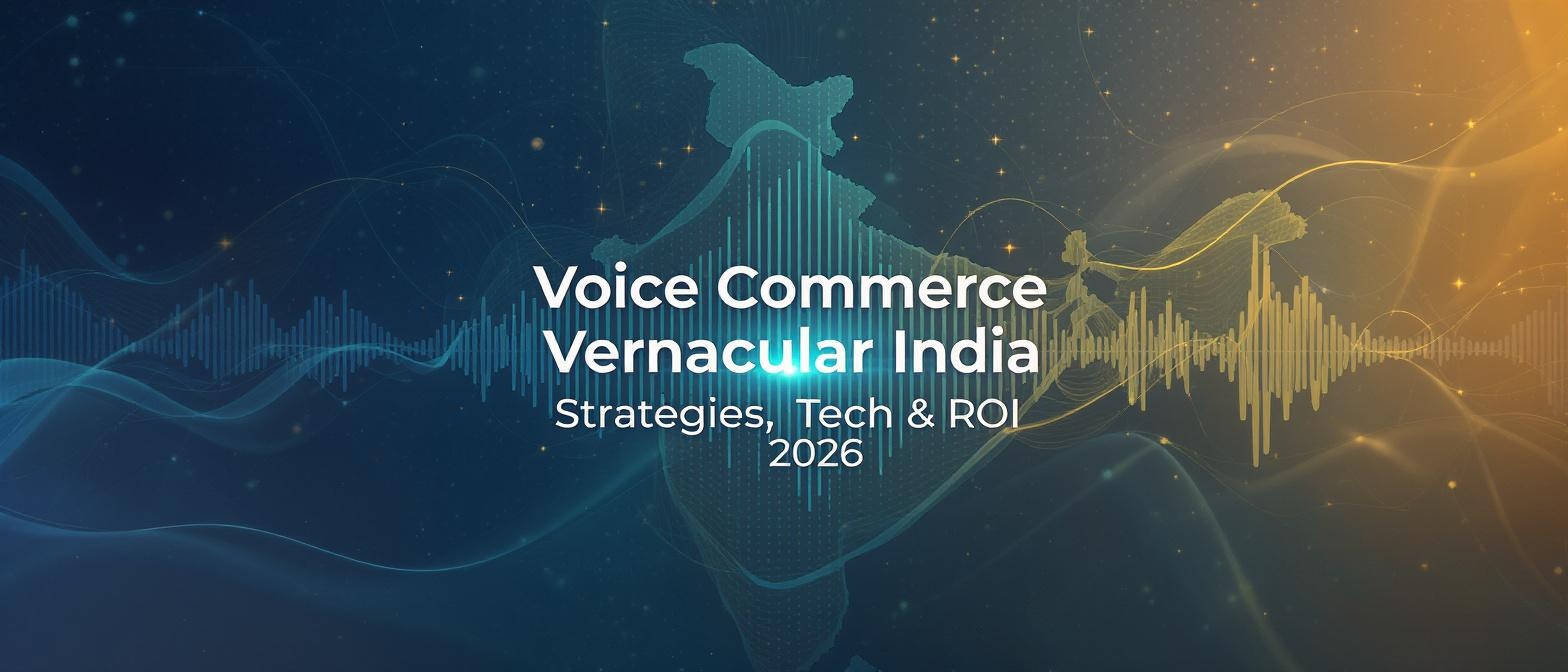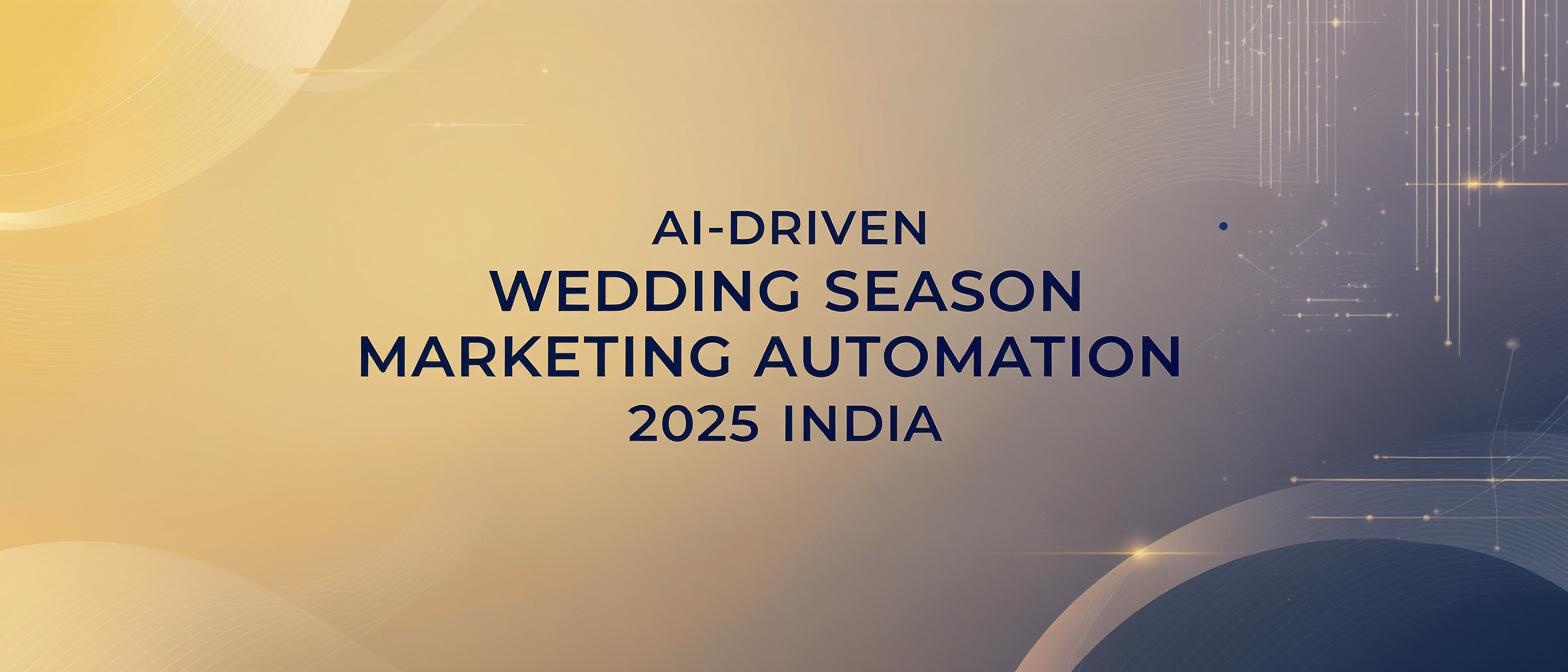Union Budget 2026 Marketing Impact: How Fiscal Changes Shape Your Strategy
Approx. 18 minutes reading time
Key Takeaways
- The Union Budget 2026 introduces major policy shifts that demand agile marketing responses.
- Marketers must leverage data ingestion and segmentation to capture new consumption-led opportunities.
- Leveraging TrueFan AI’s personalized video technology can enable real-time engagement at scale.
- Enhanced digital infrastructure and tax benefits create new growth avenues for brands.
- Adopting policy-driven marketing automation secures a competitive advantage in an evolving landscape.
The Union Budget 2026 Marketing Impact: A New Playbook for Growth
The Union Budget is India’s annual fiscal blueprint, presented by the Finance Minister, that allocates resources across sectors and sets tax and spending policies. For business leaders, it's more than just an economic document; it's a strategic roadmap that signals major shifts in consumer behavior and market dynamics. The primary focus of our analysis is the Union Budget 2026 marketing impact—the critical study of how these high-level fiscal announcements must drive immediate and decisive marketing strategy shifts.
Marketing leaders can no longer afford to view the budget as a purely financial event. Understanding the fiscal policy business impact is essential for anticipating market movements, while extracting government policy marketing insights allows for the creation of agile, responsive, and highly effective campaigns. Tracking these elements immediately after Budget Day is what separates proactive, market-shaping brands from reactive ones left struggling to catch up. This guide will unpack the key announcements and provide a tactical framework for adapting your marketing engine to the new economic landscape.
Understanding the Union Budget 2026: Key Fiscal Pillars
To harness the budget's potential, marketers must first understand the core policy shifts that will reshape the economic terrain. The Union Budget 2026 is built on several key pillars, each with profound implications for business strategy. These measures signal where the government is directing capital and consumer focus, creating predictable currents for marketers to navigate.
Here is a breakdown of the major fiscal measures and policy announcements relevant to your marketing strategy:
1. Affordable Housing & Real Estate Momentum
The government has doubled down on its commitment to housing, increasing allocations for affordable and mid-segment homes. This is coupled with extended tax rebates for homebuyers, a move designed to stimulate demand and make property ownership more accessible. This policy directly injects confidence and purchasing power into a key sector of the economy.
Source: Cushman & Wakefield
2. Deepening Infrastructure & Digitalization
A significant capital expenditure (capex) boost in digital infrastructure is set to accelerate the nation's digital transformation. A cornerstone of this initiative is the expansion of the BharatNet program, which aims to provide high-speed broadband connectivity to rural areas. This expansion broadens the digital footprint of the consumer base, opening up previously untapped markets for digital-first brands.
Source: EY
3. Empowering MSMEs & Startups
To foster innovation and entrepreneurship, the budget introduces higher credit guarantees and extends tax holidays for Micro, Small, and Medium Enterprises (MSMEs) and startups. This fiscal support system is designed to de-risk new ventures and encourage investment in emerging technologies and business models, fueling a more dynamic and competitive market.
Source: Press Information Bureau
4. Strategic Shift to Consumption-Led Growth
Perhaps the most significant macroeconomic signal is the deliberate transition from an investment-led to a consumption-led growth model. By increasing the disposable income of the middle class through tax reliefs and other measures, the government aims to stimulate domestic demand. This fundamental economic policy marketing adaptation requires brands to pivot from focusing on long-term capital investment cycles to capturing immediate consumer spending opportunities.
These fiscal changes create both challenges and immense opportunities, making it crucial to understand the overarching fiscal policy business impact and translate economic survey marketing trends into actionable strategies.
Sector-Wise Marketing Impact & New Opportunities
With the fiscal framework established, the next step is to map its direct impact on key sectors and identify emerging marketing opportunities. The budget creates clear winners and losers, and agile marketers can capitalize on these shifts by tailoring their strategies to the new economic realities.
Sectoral Impacts: Where the Growth Is
- Retail & Hospitality: With higher disposable incomes resulting from direct tax relief, a surge in lifestyle and discretionary spending is imminent. A 2025 consumer spending report predicts a 12% rise in spending on non-essential goods and travel among middle-income households. Brands in this space must prepare for increased demand by focusing on value-added services, loyalty programs, and personalized experiences that capture this new wave of consumerism.
Source: KPMG
- Technology & Manufacturing: Government incentives for local production ("Make in India") and continued investment in digital infrastructure create a fertile ground for tech and manufacturing firms. The expansion of 5G and fiber networks means more consumers are online and accessible. IDC forecasts that the number of connected devices in India will cross 2 billion by 2026, opening up vast opportunities for IoT, smart devices, and digital service providers.
New Marketing Opportunities Unlocked by the Budget
The budget isn't just a passive economic event; it's a trigger for proactive marketing campaigns.
- Budget-Driven Marketing Strategies: This involves creating campaigns that directly leverage specific policy benefits. For example, a fintech company can run targeted ads explaining how the new tax regime benefits different income brackets, while a real estate firm can launch promotions timed perfectly with the window for new home loan tax rebates.
- Budget Announcement Marketing Opportunities: The smartest brands act in real-time. On Budget Day, they launch flash campaigns using real-time data and social listening to react to announcements. This could be a simple social media post clarifying a policy's impact or a full-fledged campaign offering a "budget bonus" discount.
This is where advanced technology becomes a game-changer. Platforms like TrueFan AI enable brands to move at the speed of policy, facilitating hyper-personalization at scale. By leveraging AI-driven video campaigns, companies can achieve budget-responsive customer engagement, delivering timely, relevant, and compelling messages that resonate with the post-budget consumer mindset.
Adapting Your Marketing Strategy: A 4-Step Post-Budget Action Plan
Reacting to the Union Budget requires more than just a cursory review; it demands a systematic recalibration of your entire marketing apparatus. A structured approach ensures that fiscal insights are translated into tangible actions that drive results. This is a critical moment for economic policy marketing adaptation.
Here is a practical, four-step framework for aligning your strategy with the new economic landscape, enhanced with automation capabilities:
Step 1: Data Ingestion and Synthesis
The first step is to treat the Budget 2026 announcements as a critical new data source. Ingest key line items—such as sectoral capex allocations, new tax slabs, and specific subsidy details—directly into your marketing business intelligence (BI) tools. This transforms broad policy statements into quantifiable data points that can inform segmentation and modeling.
Step 2: Intelligent Audience Segmentation
With the budget data integrated, create new, dynamic audience segments based on the fiscal impact. Go beyond standard demographics to segment audiences by the anticipated change in their disposable income. For instance, you can create a "High-Benefit Salaried" segment for individuals in a tax bracket that saw significant relief, or an "MSME Growth" segment for businesses eligible for new credit guarantees. This level of precision ensures your message reaches those most receptive to it.
Step 3: Hyper-Personalization of Messaging
Generic messaging will fail in a post-budget environment. Craft dynamic creatives that reference specific budget benefits relevant to each segment. Personalization should be multi-layered, incorporating fields like:
- [Name]: For direct address.
- [City]: To connect with local infrastructure projects.
- [Tax_Bracket_Benefit]: To quantify their financial gain.
- [Sectoral_Incentive]: To highlight relevant business opportunities.
This is where powerful automation tools shine. TrueFan AI’s 175+ language support and Personalised Celebrity Videos allow brands to execute this at scale. Imagine sending a video from a celebrity ambassador that says, "Hi [Name], with the new tax benefits, you can save an extra ₹[Amount] this year. Why not invest it in [Product]?" This level of relevance is unparalleled.
Step 4: Data-Driven Channel Prioritization
Finally, reallocate your marketing spend to channels that align with your newly defined segments and personalized messages. If the budget benefits rural consumers through enhanced digital connectivity, increase your spend on mobile and social channels targeting those regions. For high-income earners benefiting from tax cuts, prioritize premium content on platforms like LinkedIn or targeted email and WhatsApp campaigns. TrueFan AI’s API enables real-time video triggers in under 30 seconds, allowing for instant deployment across these priority channels as soon as a user qualifies for a segment.
By following these four steps, you can achieve true budget-responsive customer engagement and turn government policy marketing insights into a powerful competitive advantage.
Budget-Driven Marketing Strategies: Real-World Examples and ROI
Theory is useful, but execution is what delivers results. Budget-driven marketing strategies are campaigns that are not just aware of fiscal announcements but are actively built to leverage them. They connect policy changes directly to consumer value propositions, creating a compelling and timely reason to engage.
Let's explore two practical examples of how this works:
Example 1: Localized Campaigns for Affordable Housing Relief
A national real estate developer can use budget announcements to run hyper-localized campaigns. Instead of a generic "Buy a new home" message, they can use personalized video to target potential buyers in Tier-2 cities that are set to benefit from new infrastructure projects.
- Campaign Trigger: A user from Lucknow searches for "3BHK flats."
- Personalized Video Script: A celebrity brand ambassador delivers a message like: "Hi [Priya], looking for a home in [Lucknow]? The new Union Budget benefits make it easier than ever. With special tax deductions and the new airport corridor, now is the perfect time to invest. Click here to see our projects near you."
- Why it Works: It connects a national policy (tax deductions) with a local development (airport corridor) and a personal context (the user's search), making the message incredibly relevant and persuasive.
Example 2: Dynamic Fiscal Change Communication via Video
A leading BFSI company needs to communicate changes in tax-saving investment schemes (e.g., ELSS) to its existing customers. A simple email might get lost. A personalized video, however, can break through the noise and drive action.
- Challenge: The budget announces a "20% extra tax deduction" on a specific investment type. The company needs to inform millions of customers quickly.
- Solution: Using a feature like TrueFan AI’s Virtual Reshoot, the company doesn't need a new, expensive celebrity shoot. They can take existing footage of their brand ambassador and simply update the key line of dialogue to reference the "20% extra tax deduction." The AI-powered platform automatically updates the video, including lip-sync, in minutes.
- Delivery: The updated, personalized video is sent via WhatsApp and email, directly explaining the new benefit to each customer by name.
Calculating the Hypothetical ROI
The impact of such strategies is measurable. Let's assume a standard email campaign has a Click-Through Rate (CTR) of 2%. By switching to personalized video, brands often see a significant lift. Drawing parallels from a real-world case study where Goibibo achieved a 17% higher email read-rate with personalized videos, we can conservatively project a 15% lift in CTR for our BFSI example.
Standard Campaign: 1,000,000 emails sent * 2% CTR = 20,000 clicks.
Personalized Video Campaign: 1,000,000 emails sent * 2.3% CTR (15% lift) = 23,000 clicks.
Result: 3,000 additional high-intent leads. If each lead conversion is worth ₹5,000, that’s ₹1.5 Crore in additional revenue from a single campaign.
Solutions like TrueFan AI demonstrate ROI through these measurable uplifts in engagement and conversion, making them indispensable tools for capitalizing on budget announcement marketing opportunities and executing a powerful fiscal changes marketing strategy.
The Future is Automated: Policy-Driven Marketing Automation
To consistently capitalize on fiscal events like the Union Budget, brands must move beyond manual campaign adjustments and embrace automation. Policy-driven marketing automation is the next frontier: the practice of creating AI-powered workflows that automatically react to policy-based triggers, enabling real-time, personalized communication without human intervention.
This approach transforms marketing from a reactive function to a proactive, intelligent system that adapts at the speed of government policy.
The Technical Workflow: How It Works
A typical policy-driven workflow involves a seamless integration of your existing marketing stack with an advanced personalization engine:
- Trigger: A policy change is announced. A webhook from a news API or an internal data source flags a specific change (e.g., "tax rebate on EVs extended").
- Data Integration: This trigger queries your CRM to pull a segment of relevant users (e.g., customers who previously showed interest in EVs).
- API Call: The system makes an API call to a platform like TrueFan AI, passing the user data (name, city, specific policy benefit) and a template ID.
- Personalized Video Generation: The AI engine generates a unique, personalized video for each user in milliseconds. This can involve:
- Virtual Reshoots: The system algorithmically updates a line of dialogue in a pre-approved celebrity video to reflect the new policy.
- Multilingual Support: The content is automatically translated, and the celebrity's speech is lip-synced into any of the 175+ supported languages.
- Omnichannel Delivery: The final personalized video is delivered across the most effective channels for that user segment, whether it's the WhatsApp Business API, email, an embedded microsite, or a programmatic digital ad.
Compliance and Trust at the Core
This level of automation is powerful, but it must be built on a foundation of trust and security. Enterprise-grade solutions prioritize compliance with certifications like ISO 27001 and SOC 2, ensuring data is handled securely. Furthermore, a consent-first approach to celebrity usage and automated moderation filters ensures that every piece of content is brand-safe, compliant, and ethically sound.
Analytical Insights & The Future of Budget-Responsive Marketing
A successful strategy is one that can be measured, optimized, and future-proofed. Tracking the fiscal policy business impact is not a one-time activity but an ongoing analytical process. By leveraging sophisticated analytics dashboards, marketing leaders can quantify the ROI of their budget-responsive campaigns and identify trends that will shape future strategies.
Key Metrics to Track
To measure the true effectiveness of your campaigns, move beyond vanity metrics and focus on performance indicators that tie directly to business outcomes:
- Watch-Through Rate (WTR): For video content, this metric shows how much of your message the audience is actually consuming.
- Conversion Lift: Use A/B testing to compare the performance of a budget-personalized campaign against a generic control group.
- Customer Lifetime Value (CLV) Change: Track how the CLV of segments targeted with budget-driven offers changes over the following months.
Economic Survey Marketing Trends to Watch
Looking ahead, the intersection of fiscal policy and marketing technology will accelerate. Based on current trajectories, we can forecast several key economic survey marketing trends:
- AI-Generated Video Personalization Becomes Mainstream: By 2026, the use of AI to generate personalized video content at scale will shift from novelty to necessity.
- Shift to Consumption-Led Digital Channels: Marketing budgets will continue to migrate from traditional broadcast media to agile, data-rich digital channels.
- Hyper-Local Campaigns Gain Dominance: Marketing messages will be tailored to specific districts or cities based on announced infrastructure projects and localized grants.
Mastering your analytics is fundamental to refining your fiscal changes marketing strategy and ensuring your brand continues to lead the conversation on the Union Budget 2026 marketing impact.
Conclusion: Agility is Your New Competitive Advantage
The Union Budget 2026 is far more than a fiscal statement; it is the starting gun for a new year of strategic marketing. In today's fast-paced digital economy, the ability to rapidly analyze, adapt, and act on fiscal policy is no longer optional—it is a competitive imperative. The brands that thrive will be those that view the budget not as a disruption, but as a roadmap of opportunities.
The key takeaway is agility. By transforming high-level economic policies into data-driven actions, you can create campaigns that are not only timely but also deeply relevant to your customers' new realities. The framework outlined in this guide provides a clear path to achieving this, from data ingestion and segmentation to hyper-personalization and automated execution.
This is where leading-edge technology provides a decisive edge. By offering budget-driven marketing strategies powered by policy-driven marketing automation, TrueFan AI and other innovators in the space are essential for achieving true budget-responsive customer engagement. They provide the tools to not just keep pace with change, but to capitalize on it.
Your Next Steps
- Audit Your 2026 Marketing Plan: Use the 4-step framework discussed—Data Ingestion, Audience Segmentation, Message Personalization, and Channel Prioritization—to audit your current marketing plan for Budget 2026 alignment.
- Experience the Future of Engagement: Request a demo of an enterprise solution to see firsthand how sub-30-second personalized video triggers can transform your customer communication and drive measurable results.
The Union Budget 2026 marketing impact will be defined by the actions you take today. Seize the opportunity to build a more agile, intelligent, and effective marketing engine.
Frequently Asked Questions
1. What is the most important first step for a marketing team after the Union Budget is announced?
The most critical first step is data ingestion and analysis. Your team should immediately parse the budget documents to identify all policy changes, tax adjustments, and sectoral allocations relevant to your industry and customer base. This data should be fed into your BI and CRM systems to form the foundation for strategic adjustments.
2. How can small businesses with limited budgets leverage budget announcements?
Small businesses can focus on high-impact, low-cost strategies. Use social media to create content that explains how budget policies (like MSME credit guarantees or tax reliefs) benefit your customers. A simple, well-timed email campaign targeting your existing customer base with a special "budget bonus" offer can also be highly effective without requiring a large spend.
3. What is "policy-driven marketing automation" and why is it important?
Policy-driven marketing automation uses technology to automatically trigger marketing campaigns in response to government policy changes. It's important because it allows brands to react with incredible speed and relevance, delivering personalized messages about new benefits or regulations to the right audience at the right time, without manual intervention. This builds trust and can create a significant first-mover advantage.
4. Can personalized video campaigns be deployed for B2B marketing in response to the budget?
Absolutely. For B2B, personalized videos can be even more powerful. Imagine sending a video to a CFO of a target company where your brand ambassador says, "Hi [CFO Name], with the new capex incentives announced in the budget for the manufacturing sector, our [Product Name] can help [Company Name] achieve an additional 15% ROI. I’ve attached a personalized projection for you." This level of targeted communication is highly effective.
5. How does a platform like TrueFan AI ensure brand safety when using celebrity videos for budget-related communication?
Platforms like TrueFan AI use a multi-layered approach to brand safety. All content is created with explicit, consent-first celebrity agreements. The platform uses automated AI-powered moderation filters to scan for any non-compliant text or imagery before rendering a video. This ensures that every piece of personalized content adheres to brand guidelines and maintains the integrity of both the brand and the celebrity ambassador.
6. How long does it typically take to launch a budget-responsive marketing campaign?
With traditional methods, it could take weeks to strategize, create assets, and launch a campaign. However, with policy-driven automation and tools for real-time video generation, a campaign can be conceived and launched within hours of a budget announcement. The technology to trigger and personalize content exists; the key is having the strategic framework in place to act decisively.





